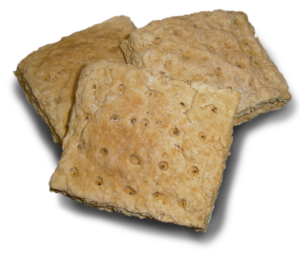Introduction:
In the vast expanse of the wilderness, where nature’s raw beauty and unpredictable challenges intersect, survival skills are not just valuable – they are paramount. Among these essential skills, few hold as much significance as the ability to find and procure water. Water, the essence of life itself, is a fundamental necessity for the human body. Whether you’re an intrepid explorer, an outdoor enthusiast, or simply someone seeking to be prepared for unexpected circumstances, mastering the art of locating and purifying water in the wild is an invaluable asset.
The Importance of Water:
Water, in all its purity, is synonymous with survival. The human body can endure for weeks without food, but mere days without water can herald the onset of dehydration, leading to an array of physical and cognitive ailments. The severity of dehydration spans from mild symptoms like fatigue and dizziness to critical conditions such as organ failure and even death. In this context, knowing where to find water and how to render it potable becomes not just a skill, but a matter of life and death.
Locating Water Sources:
The quest for water in the wild is a journey guided by nature’s cues. Here are some methods to help you pinpoint potential water sources:
- Topographical Awareness: Understanding the lay of the land is pivotal. Water, in its relentless pursuit of lower ground, flows downhill. Valleys, ravines, and depressions are prime areas to initiate your search.
- Follow the Trails: Animal trails and tracks often lead to water. Creatures of all sizes gravitate towards water sources to quench their thirst, making these pathways a natural guide for human survivalists.
- Vivid Vegetation: Lush vegetation and vibrant plant life can signify the presence of underground water reserves. In arid regions, spotting greenery can be a beacon towards hydration.
- Listen to Nature: The soothing sound of running water is nature’s beacon. Follow the auditory trail to rivers, streams, or the melodious trickle of an underground spring.
- Avian Indicators: Birds, with their keen senses, are attuned to water sources. Flocks of birds congregating in a particular area can provide a vital clue to nearby water bodies.
- Visual and Physical Clues: Keep an eye out for damp or muddy ground, as well as signs of insect activity. Both indicate that water may be close at hand.
Purification Techniques:
Upon locating a water source, the battle is only half won. Ensuring the water is safe for consumption involves various purification methods:
- Boiling: Boiling water for a minimum of one minute is a tried-and-true method to eliminate harmful pathogens. The heat breaks the molecular bonds of bacteria, viruses, and parasites, rendering them harmless.
- Filtration: Utilizing cloth, bandanas, or improvised filters composed of sand, charcoal, and gravel can help eliminate larger particles and impurities from the water.
- Chemical Guardians: Water purification tablets or drops containing chlorine or iodine are compact and highly effective solutions for neutralizing microorganisms.
- Harnessing Solar Power (SODIS): The sun’s ultraviolet rays have the power to disinfect water. Fill transparent plastic bottles with water and leave them exposed to direct sunlight for several hours to kill pathogens.
- Improvised Techniques: In dire circumstances, innovative methods can be employed. A solar still, for example, captures water vapor, condenses it, and provides a modest amount of hydration. A basic filter can be fashioned from charcoal, sand, and cloth.
The Path to Mastery:
The journey toward mastering the art of finding water in the wild is not a simple endeavor. It requires patience, practice, and perseverance. Familiarizing oneself with the unique topography and ecosystems of various regions expands your repertoire of skills. Simulated scenarios, such as survival training exercises, can provide a controlled environment to hone your abilities and make mistakes without dire consequences. Additionally, researching indigenous practices of local communities can offer insights into water-finding techniques refined over generations.
Preparation and Education:
Embarking on any wilderness adventure mandates a certain level of preparation. Equip yourself with essential tools: maps, compasses, GPS devices, and a comprehensive survival kit that includes water purification solutions. Assemble knowledge through books, online resources, and training workshops. Enrolling in survival courses can impart practical skills under expert guidance, enhancing your confidence in the face of nature’s challenges.
Conclusion:
In the annals of survival, the skill of finding water holds an esteemed place. It demands not only an understanding of the natural world but also an appreciation for the delicate balance between life and the elements. Water, the lifeblood of the Earth, is the thread that connects all living things. As you tread through untamed terrain, remember that the knowledge of locating and purifying water is the lifeline that separates the prepared from the unprepared, the survivors from the strugglers. In embracing this skill, you embrace a deeper connection to the world around you and, most importantly, a heightened chance of thriving amidst the wild.



